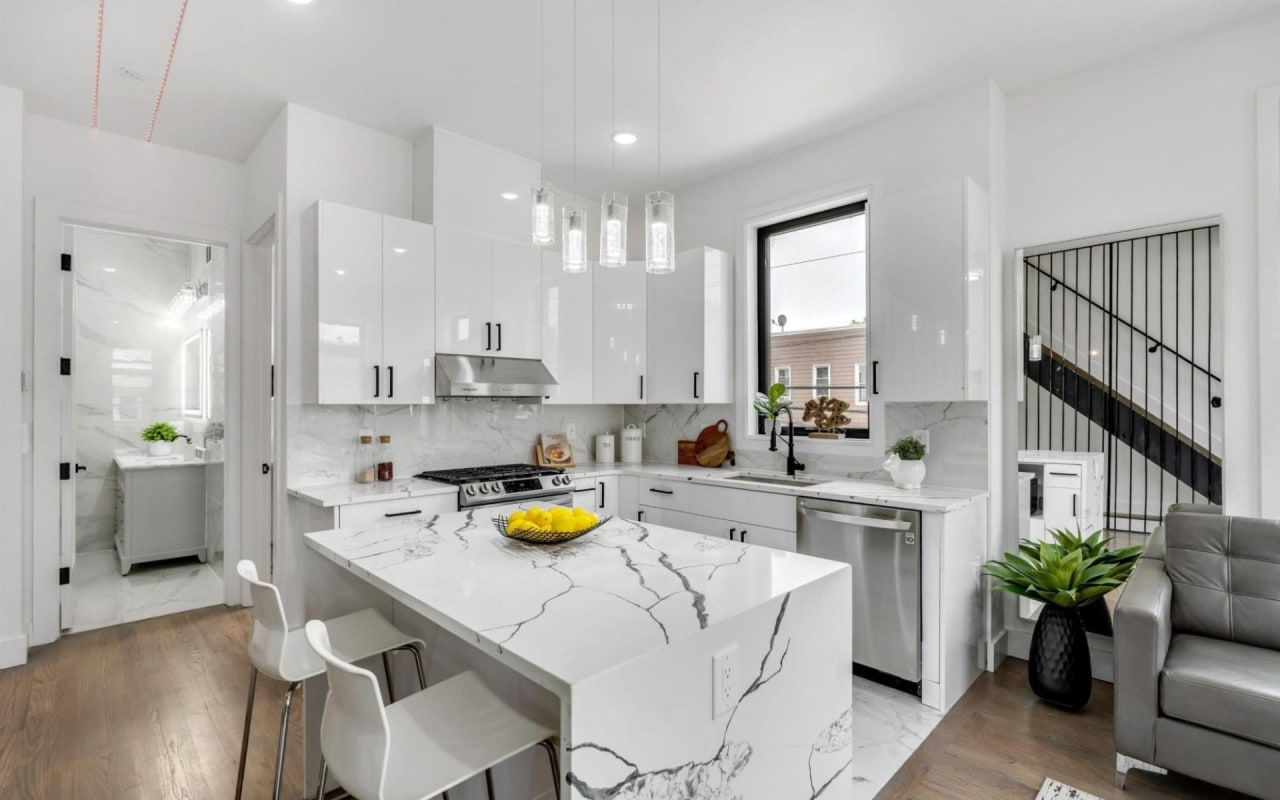In the world of real estate, the term “move-in-ready” is often thrown around, but what does it truly mean? And what should a homebuyer expect when they hear those words? By the book, a move-in-ready home is a house or property “
ready for immediate occupancy.” That straightforward definition begs many questions for buyers looking for a move-in-ready home. This article aims to break down the concept in detail; read on to explore the pros and cons, standard features, and misconceptions about move-in-ready homes.
Pros and cons of move-in-ready homes
If you're on the home search, it's crucial to understand the advantages and drawbacks associated with move-in-ready homes. Choosing between a move-in-ready property and one that requires renovations or construction can significantly impact your lifestyle, budget, and overall home-buying experience.
Here are a few main advantages of a move-in-ready home:
-
Save money. Move-in-ready homes are generally more affordable than custom homes. With modern features and appliances, you’ll save on maintenance and utility costs.
-
Save time. Perfect for those with tight schedules or who prefer minimal involvement, move-in-ready homes allow you to move in without delays.
-
Less stress. Moving is already challenging, but choosing a move-in-ready home means fewer worries about construction or renovations.
-
Know what you’re getting. Tour your new home before buying, ensuring it meets your needs and preferences.
-
Attractive to many buyers. Designed to appeal to many buyers, move-in-ready homes are easier to sell in the future, making them a good investment.
Some buyers may encounter the following cons to move-in-ready homes:
-
Limited design choices. You'll have little input on the design elements of a move-in-ready home, which could be a downside if customization is essential to you.
-
Location constraints. The location of a move-in-ready home is predetermined, so you won't have the flexibility to choose your dream spot.
-
Similar homes nearby. If uniqueness is crucial to you, be aware that move-in-ready homes are often built in neighborhoods with similar properties.
-
High demand. The housing market is competitive, and move-in-ready homes can sell quickly, which may be challenging if you need extra time to sell your current house.
Decoding the term “move-in-ready home”
In essence, a move-in-ready home is primed for occupancy. All of its systems (like heating and cooling) are in working order, it meets local code requirements, and there's no need for immediate repairs or upgrades. It's a house where buyers can expect to move their furniture in and start living immediately after closing the deal.
Misconceptions about the term “move-in-ready”
While a move-in-ready home is meant to be habitable immediately after purchase, the term doesn't imply perfection. The property might not match the buyer's aesthetic preferences or contain the latest, high-end finishes. However, the essential aspects of the home, such as plumbing, electrical systems, and roofing, are all in good condition and comply with local code requirements.
Common characteristics of a move-in-ready home
Functional plumbing and proper piping
A house with a fully operational plumbing system, free from leaks, blockages, or broken pipes, is a fundamental requirement of a move-in-ready home. Proper plumbing ensures homebuyers avoid being greeted with unpleasant surprises like water damage or unexpected renovations.
Contemporary electrical outlets and wiring
Move-in-ready homes should also have modern electrical systems in place. Outdated wiring could be a safety hazard and would not comply with most local code requirements. All outlets should be working, and the electrical panel should be able to handle the power load required by contemporary appliances and devices.
Watertight roof and house exterior
A move-in-ready home's roof and exterior walls should be in good condition and free from leaks or damage. This includes the absence of issues like water damage, mold, or structural wear that could compromise the home's safety or lead to hefty repair costs down the line.
Inclusion of major appliances
A move-in-ready home often includes major appliances like refrigerators, ovens, washers, and dryers. These appliances should be modern, energy-efficient, and in working order, offering convenience to the buyer and potentially saving them significant money.
Undamaged flooring and walls
The walls and flooring in a move-in-ready home should be free from significant damage. This can mean anything from hardwood floors free of rot and damage to walls without holes or considerable wear. The paint might not be new, but it should be in an acceptable state that doesn't require immediate attention.
Fully functional windows and door locks
Safety and security are paramount in any home. As such, all windows and doors should open, close, and lock properly in a move-in-ready house. This ensures that the new homeowner feels secure when they move in.
Optimized heating and cooling systems
A home isn't genuinely move-in-ready unless its heating and cooling systems are tuned up and functioning efficiently. An efficient HVAC system provides comfort to homeowners and can contribute to energy savings.
Immediate habitability
Above all, a move-in-ready home should be immediately habitable. This means that the utilities are set up, no major repairs are waiting to be completed, and the buyer can comfortably live in the space from day one.
About Team Francesco
As one of the outstanding real estate teams in New Jersey,
Team Francesco has established an impressive reputation in the real estate sector. Every team member has earned positive testimonials from clients worldwide looking to buy or sell New Jersey real estate. If you're looking to buy or sell a home or have any questions about the New Jersey real estate market,
contact Team Francesco today.
*Header photo courtesy of Team Francesco










